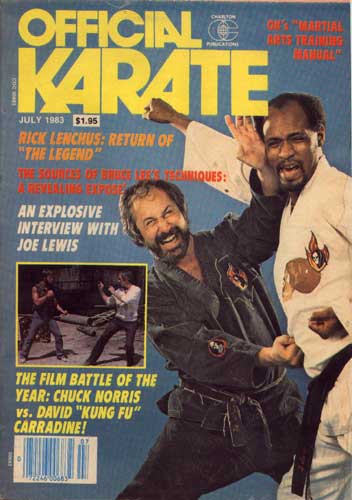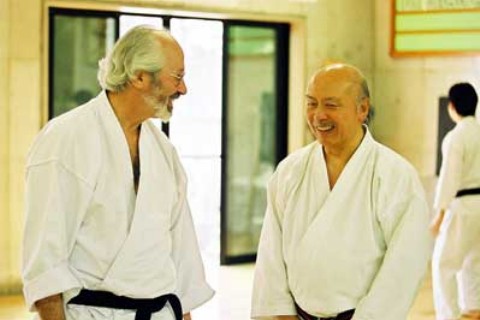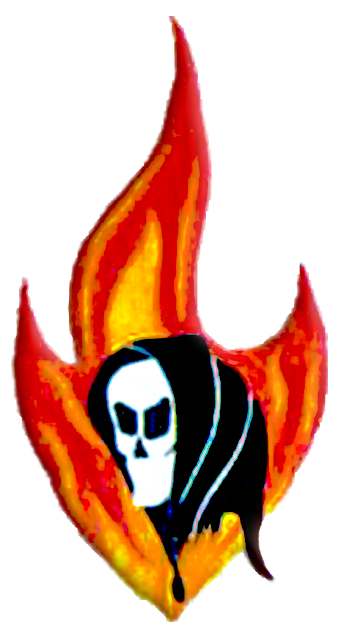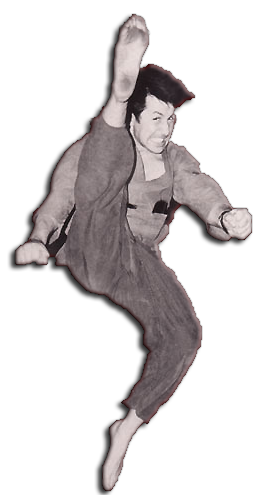Our master teacher O'Sensei Richard Lenchus who is celebrating his 50th year of teaching Martial arts in America. This year, one of the founding fathers of American karate wants his student to have an understanding of our martial arts history and the greatest influence on O'Sensei Lenchus, his teacher Master Kenjiro Kawanabe.
Master Kawanabe was born in 1931 in Atsugi Japan. From 1950 to 1954, he studied English literature at Waseda University. During his university years, he also joined the University Karate Club where he studied from O'Sensei Funakoshi Gichin. Wasada University was the heart of the karate world at the time with Martial arts legends Mitusuke Harada (Director KDS UK), "Wantanbe" Toshio Kamata (Japan), Kormori (japan), Tsutomu Oshima (USA SKA director), Shigeru Egami (Japan), Tadao Okuyama (Japan), Kenjiro Kawanabe practicing. In 1953, Kawanabe succeeded the now Master Tsutomu Oshima, a well respected founder of Shotokan Karate in the United States, as captain of the Waseda University Karate Club. Funakoshi Sensei was present in the Waseda dojo at least once every month until Master Kawanabe's graduation in the spring of the 1954. Master Funakoshi was a major influence on Kawanabe while he was at the Waseda Dojo.
Master Kawanabe was also influenced by his studies of Shin'ei Taido (Jujitsu) developed by Master Hoken Inoue, nephew of Ueshiba Morihei, the founder of Aikido. Master Kawanabe studied intensely Shin'ei Taido for about three years, between 1954-57, under Master Inoue. Master Kawanabe also studied under Sensei Tadao Okuyama. The ken (wooden sword). Shortly after the death of Funakoshi Sensei in 1957, Kawanabi Sensei opened his own school in Hon Atsugi Japan near the military base that O'Sensei Lenchus was stationed at while serving in the US Marines. Already a competitive boxer and a student of Martial Arts in the Marines in 1957, O'Sensei became excited by the Shotokai karate of Master Kawanabe and became one of the first American students in Kawanabe Sensei's new Dojo. He brought many servicemen with him to class and eventually becoming a martial arts instructor to the American military while he was stationed in Japan.
But to understand the roots of our Karate fully, it is necessary to study a little more deeply into the background and history of Master Gichin Funakoshi and to grasp a little understanding of the Shotokai and the Shotokan.
Master Funakoshi was born in Shuri, Okinawa. Stiff opposition of Funakoshi's family to the abolition of the Japanese "topknot" meant he would be ineligible to pursue his goal of attending medical school. Being trained in both classical Chinese and Japanese philosophies and teachings, Funakoshi became an assistant teacher in Okinawa. As a young man, he was weak sick and in poor health while living with his grandparents. While attending primary school, he was a classmate of Yasutsune Azato's son. He received his lessons in karate from Yasutsune Azato. His parents later took him to Yasutsune Itosune for Karate training, each trained him in a different Okinawan martial art. From Yasutsune Azato, he learned Shuri-te and from Yasutsune Itosue, he learned Naha-te. It would be the melding of these two styles that would one day become Shotokan karate, his own style which was also influenced by his study of kendo distancing and timing.

Funakoshi-sensei is the man who introduced karate to Japan. In 1917, he was asked to perform his martial art at a physical education exhibition sponsored by the Ministry of Education. He was asked back again in 1922 for another exhibition. He was asked back a third time, but this was a special performance. He demonstrated his art for the emperor and the royal family! To understand the importance of this fact, you have to understand that The Ministry of Education held only one exhibition a year and rarely invited anyone for a second exhibition. After this, Funakoshi-sensei decided to remain in Japan and to teach and promote his art.
Shotokan is named after Funakoshi's pen name, Shoto, which means "pine waves" or "wind in the pines". In addition to being a karate master, Funakoshi was an avid poet and philosopher who would reportedly go for long walks in the forest where he would meditate and write his poetry. Kan means training hall, or house, thus Shotokan referred to the "house of Shoto". This name was coined by Funakoshi's students when they posted a sign above the entrance of the hall at which Funakoshi taught reading "Shoto kan". Like the word Shotokan the word Shotokai refers to Funakoshi's pen name shoto, kai means Organization. When The Shotokai was first begun in 1935, it related to the establishment of the Shotokan Dojo Fund.
Shorty after World War II, Isao Obata, Seichi Takagi, Hiroshi Noguchi, Shigeru Egami and Genshin Hironishi gathered other longtime karate practitioners from universities such as Waseda, Keio and Takushoku to form the JKA. The JKA was created in order to provide organizational and financial support for Funakoshi, who, like many true martial arts masters, though successful in passing the art to others, was not financially successful. Takushoku Uníversity had been the training schools for imperial administrators during Japan's expansionist period, and its students gravitated into administrative positions in the new karate organization. With their imperial background, they soon began to lend a regimented, aggressive, expansionist flavor to the JKA, a development not entirely palatable to the more introverted university men.
Eventually, the university groups decided to withdraw from the JKA and reformed the Shotokai, where Master Funakoshi was the president until his death and the All-Japan University Karate League was under the leadership of Isao Obata. The division, however, was not exact; Takushoku University stayed with the JKA while also participating in the University League and several individuals made their own choices. The overall result was that Japanese karate divided in the 1950s into what were essentially a university karate league and a public or layman's karate group.
The JKA considered the aggressive development and expansion of karate training to be a vital part of its practice program; "technical progress" were its watchwords. By contrast, the university group tended to be more conservative and followed Funakoshi's original teachings more closely. The JKA adjusted details of Funakoshi's kata, redefining characteristic movements. From the view of the university group, one of the clear differences between the JKA's shotokan and Ohshima's/Kawanabe university-based version is that the JKA teaches kata in a different way than Funakoshi's because of these adjustments. Ohshima/Kawanabe, by contrast, taught only Funakoshi-authorized kata.
To complicate the question even further Egami, Funikoshi most senior student himself and the Shotokai's director himself modified and "improved the art as he pushed more fluid movement that the Shotokai is known for.

When Lenchus Sensei returned to the United States and Brooklyn in 1961 martial artists were few and far between. The first established school he taught was Judo Inc. in Brooklyn. He copied (unknown to him at the time) Funikoshi Sensei's introducing karate to mainland Japan, by teaching in Kano (the founder of Judo) Sensei's dojo. The martial artists of the time were the founding fathers of American Martial Arts. It was not unusual for a class to have advanced practitioners from many different styles of learning. From one teacher, he often shared what his style had to offer, and the royalty of this group were people, like Lenchus Sensei, who became ranked in the country of the arts birth. It was what is often called the blood and guts days of the art where a martial artist had to be ready in the blink of an eye.
This is truly the flavor you will find in the 34th Street Dojo sometimes erratic and unpredictable, although we are truely a school of shotokai/Shotokan karate. Todays guest teacher may be a master of Gojuru, a master of stick fighting, Aikido, a Tai Chi Master, a fighter who is currently having a great run of success in the tournament circuits, or someone from mixed martial arts for us to try our hand at. The 34th Street Dojo is a place where regardless of your ability you are constantly challenged.
There are many fine schools of Martial arts in New York one of the things that defines them is that you find people of all ranks and ages studying from its masters. That is what you will find at the 34th Street Dojo. Real martial artists practicing real martial arts, and perhaps unique at the 34th Street Dojo when you practice there you become part a family of New York and world Martial artists. Literally people visit form around the country and around the world, you will meet authors, promoters, some of the nicest and wildest world class characters you will ever meet.
--Sensei Ratzker



